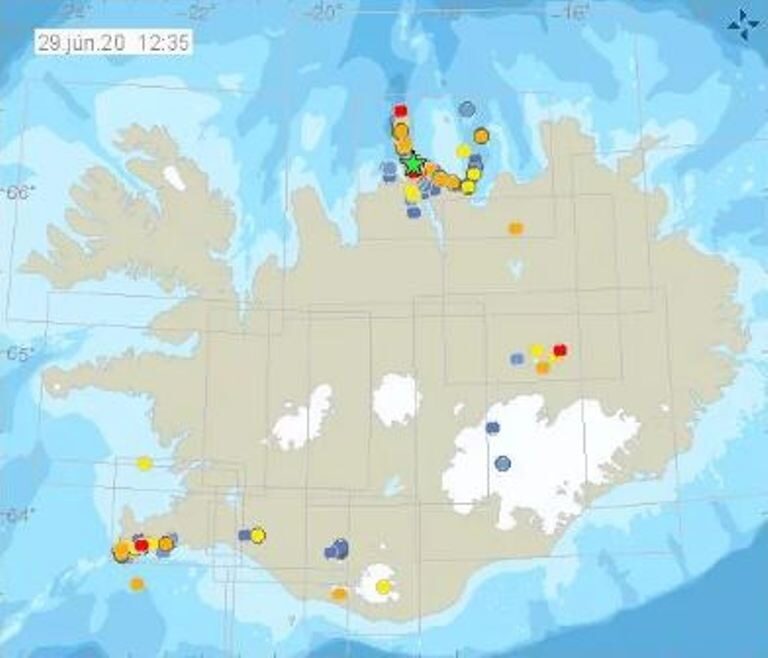
© IMOImage showing the earthquake swarm to the north of Iceland.
An ongoing earthquake swarm in Iceland has now reached around 9,000 quakes, officials have said. The swarm, in the north of the country, began on June 19. Experts with the Iceland Meteorological Office (IMO) said activity is ongoing and more earthquakes can be expected.
In an updated statement on the IMO website, officials said there were two events above magnitude 3 on June 28. Both these earthquakes were felt in Siglufjordur and Ólafsfjordur — towns near to where they hit.
The IMO said that of the 9,000 earthquakes, three have been above magnitude 5. This includes a magnitude 5.8 earthquake on June 28. It said there is a chance of more earthquakes of this magnitude in the area.
What is causing the earthquake swarm is not known. Kristín Jónsdóttir, Earthquakes Hazards Officer for the IMO, told the Icelandic National Broadcasting Service RÚV: "We're trying to figure out what's going on."She said the earthquakes are shallow and it could be that they are related to geothermal production in the region, as they are located near a geothermal power plant.
A statement from the IMO released June 22 said there had been hundreds of reports of earthquakes from across the northern part of the country. There were also reports as far as the capital, Reykjavíc, 125 miles away. A this time, 2,5000 earthquakes had been recorded in the swarm.
Iceland sits on the Mid Atlantic Ridge and is slowly being torn apart. This is a tectonic plate boundary that separates the Eurasian and the North American tectonic plates. The current swarm is taking place on the Tjörnes Fracture Zone. According to Volcano Discovery, this is a zone that separates Iceland's northern volcanic zone from the Kolbeinsey Ridge.
The current swarm does not appear to have caused any damage to property. It has been linked with landslides and rocks falling near the epicenter. However, because of steep slopes in the area, researchers say these sorts of events have taken place before. Members of the IMO were flown to the region by the Icelandic Coast Guard for observations on June 21.
The earthquake swarm coincides with signs a volcano to the south may be about to erupt. The IMO said activity at the volcano, which is one of Iceland's most active, appears to be characteristic of an impending eruption. Since January, researchers have recorded uplift in the area, while in recent weeks scientists have recorded an increase in sulfur dioxide close to where two previous eruptions have taken place. Activity at the volcano has not been linked with the earthquake swarm.

Comment: Iceland's Grímsvötn volcano showing signs of increased activity, eruption possible